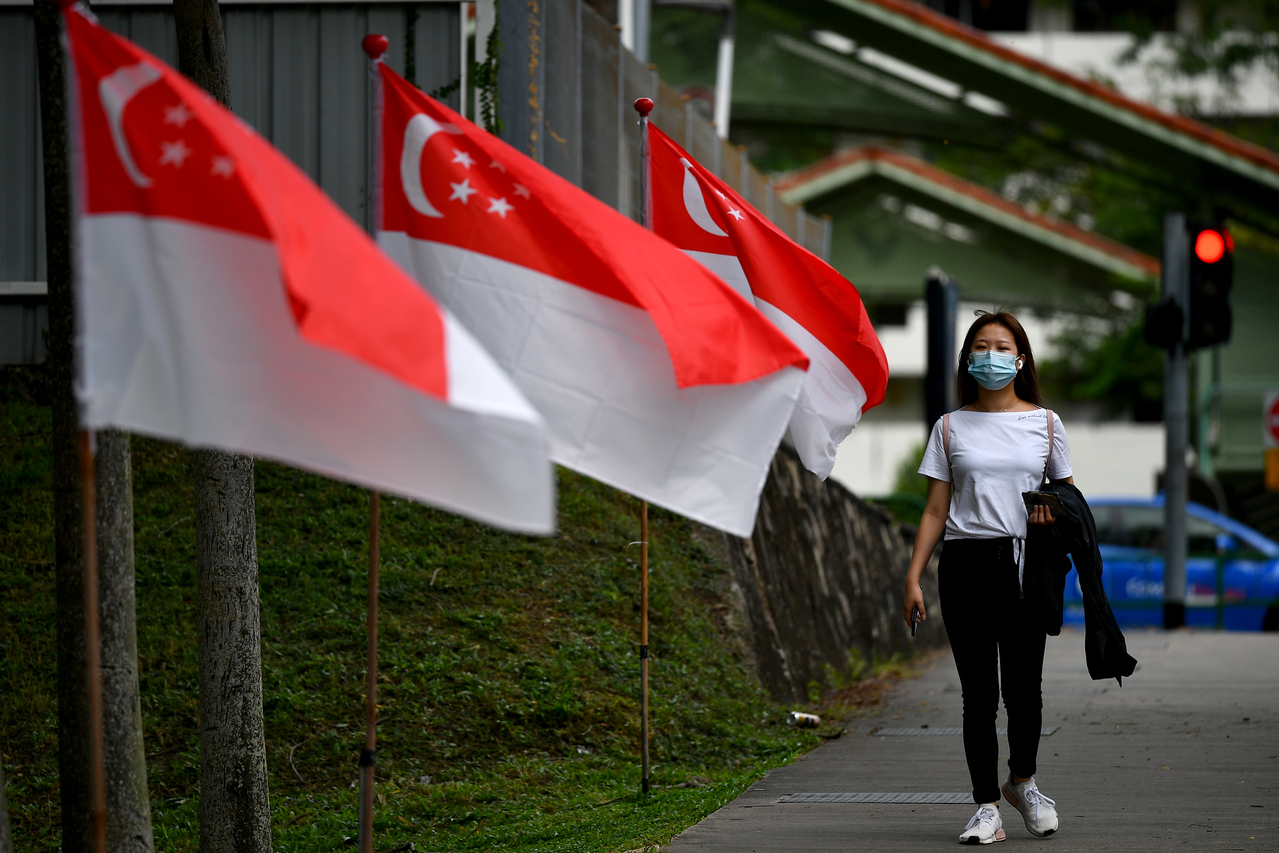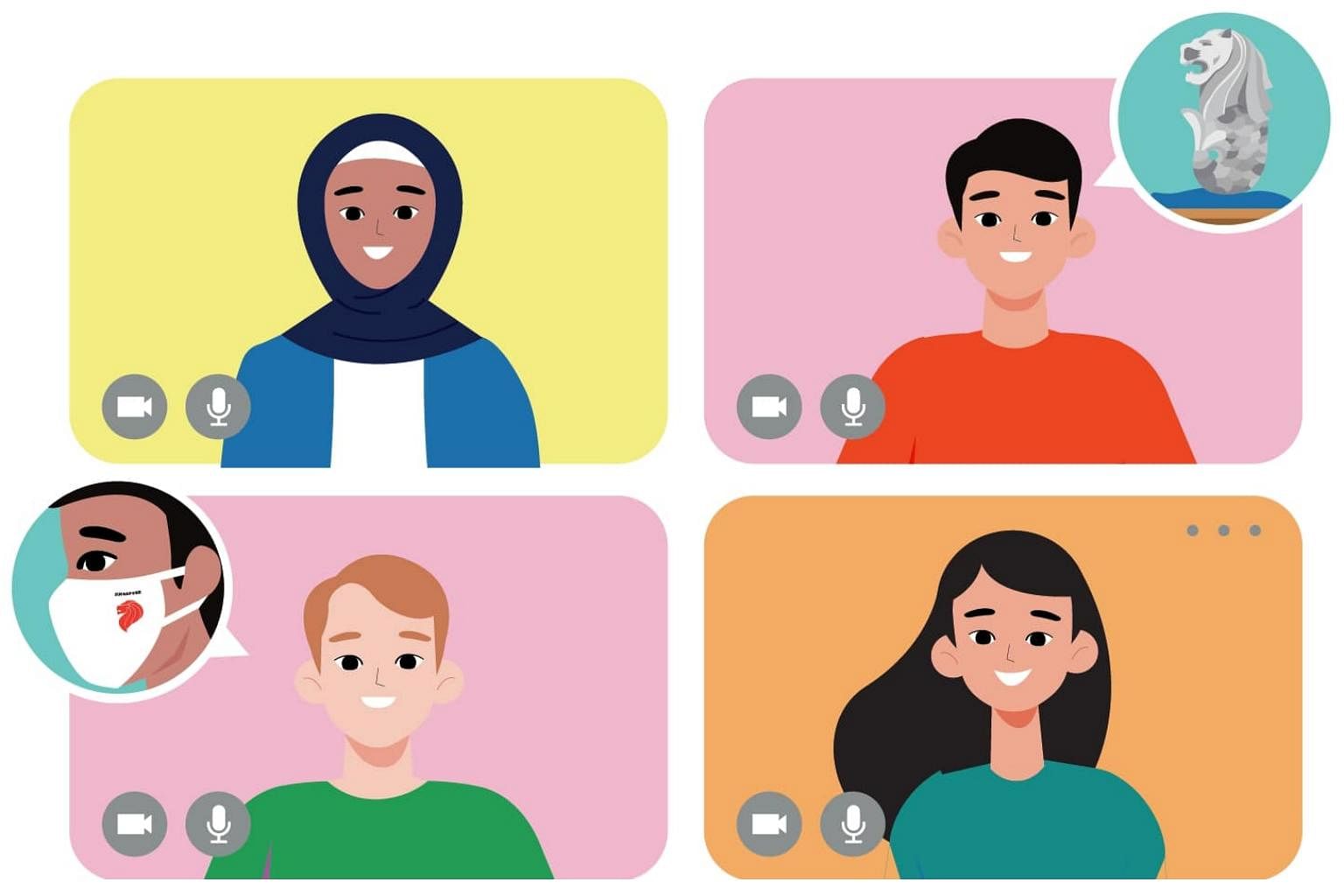Make more creative use of national symbols, set up online platform to report misuse: Citizens workgroup
Sign up now: Get ST's newsletters delivered to your inbox

One key finding is that Singaporeans continue to hold the national flag in high regard and care about its proper display.
PHOTO: ST FILE
Follow topic:
SINGAPORE - A citizen workgroup first convened in January has recommended that the Government relook how people can more creatively use national symbols like the national anthem and flag - while continuing to prevent their abuse through a one-stop online reporting platform.
It is also suggesting that flag-raising ceremonies be conducted in more official languages, and that the National Day Parade (NDP) incorporate hand signing for the national pledge and the anthem to better include the hearing-impaired community.
The Citizens' Workgroup for National Symbols, comprising 47 Singaporeans representative of the population, presented its findings to the Ministry of Culture, Community and Youth (MCCY) this week.
The 40-page report comes after a debate over four months that ranged from whether to remove the line "regardless of race, language or religion" in the pledge to the adding of more official national symbols.
The report settled on keeping the pledge as it is and finally decided against rallying for more official national symbols to be added, although it said other local icons, like the Jewel Changi Airport and Gardens by the Bay, can be more formally recognised for their place in Singapore's history and their role in promoting international recognition.
The group's feedback will inform a subsequent government review of the Singapore Arms and Flag and National Anthem Act and Rules, which governs the use of national symbols. It should also be useful for non-legislative measures such as how to improve public education - in schools and out - on their meaning and usage.
MCCY has said an Amendment Bill in Parliament next year should be expected. It will be issuing a response to the workgroup's report by September.
The findings come ahead of National Day next month and after incidents like rock icon Ramli Sarip's more soulful rendition of the national anthem in 2019 sparked debate about whether more unorthodox uses of national symbols by individuals with good intentions should be allowed.
Currently, there are guidelines surrounding the use of five national symbols, all of which the workgroup looked at. They are: the Singapore flag, the national anthem, the national pledge, the national coat of arms and the lion head symbol, introduced in 1986.
The workgroup also examined the national flower, Vanda Miss Joaquim, and the Merlion, through first designing a public survey to gather views from nearly 1,500 members of the public, before breaking off into focus groups to conduct research, group discussions and interviews.
Among the key findings are that Singaporeans continue to hold the national flag in high regard and care about its proper display, although they are more open to its use on artwork and commercial products.
The workgroup also found that people's understanding of the lyrics in the National Anthem could be strengthened, and that the pledge has strong potential to prompt conversations on national identity, given its textual nature and its listing of values the country is predicated on.
National symbols should have more prominence in people's daily lives after their schooling years, the report said. The Government should collaborate with the community to express the interpretations of national symbols through everyday elements like food, fashion, street art and new media.
While relaxing rules on the symbols' use, a digital platform can be set up so any misuse can be reported quickly by citizens.
Mr Syarifuddin Azhar Rosli, 25, a member of the workgroup, said: "We want to define what creative use means. The one-stop platform should have the official versions of all the symbols. People should be able to ask if something they come across is being correctly used.
"With this guidance, for example, the national pledge can be made into a song and remixed, as long as the integrity of the words is there and the message is consistent. It should be something that is encouraged."
The incoming engineering freshman at the Singapore University of Technology and Design was part of the team that debated whether to remove the line "regardless of language, race, or religion" in the pledge.
He said those who wanted it removed thought the listing of Singaporeans' differences is too specific and might preclude other differences. They also thought the line's removal would not detract from the pledge, since the acceptance of differences should already be encapsulated by the clause "pledge ourselves as one united people".
Another suggestion was that the line should simply be replaced by "regardless of differences", Mr Syarifuddin said. The workgroup finally came to the conclusion to keep the words in their current form, "because by removing it we might send the message that we are not acknowledging these differences".
It, however, agreed that differences should not be limited to the three elements spelled out and that education efforts should convey the spirit of the line: that all Singaporeans are different from one another in some way and that this should not stop them from coming together to build Singapore, Mr Syarifuddin said.
Another workgroup member, Ms Jensrani Thangavel, a retired history teacher, said she has lived through three National Anthems - God Save the Queen of the United Kingdom, Negaraku of Malaysia between 1963 and 1965 and Majulah Singapura.
"Our national anthem gives us an identity among the world's nations and unite Singaporeans, no matter their previous origins. After independence, we had our own symbols and people knew that Singapore was theirs.
"We want these national symbols to stay for another 60 years," the 65-year-old said.
She also emphasised the importance of education: "I used to tell my students about stateless people and the plight of places like Northern Ireland. Teaching them about national symbols properly is very important because as long as they know some of it later on and love Singapore, it's good enough."
The workgroup hopes more exposure to the national symbols in people's daily lives will result in more opportunities to think about what they mean and to create personal connections with them.
Mr Benjamin Tan, 31, who is part of the workgroup and one of the creative producers of this year's NDP, said: "People say they miss hearing the national anthem. More touchpoints in their daily lives will help boost these symbols at large-scale events like the NDP, where there is a grander context and a buildup of emotions.
"The moment of unity and pride only works if they feel these symbols belong to them."
Minister for Culture, Community and Youth Edwin Tong said on Friday (July 16) that his ministry will give serious consideration to the recommendations and encouraged people to read the report online.
"(National symbols) represent the values we seek to uphold and cherish as a nation," he said. "These symbols must also be relatable and have an enduring, galvanising quality."
"With National Day coming up, it is a good way and time to reflect on what the symbols mean to us."
The Citizens' Workgroup for National Symbols conducted a survey on nearly 1,500 people and held extensive discussions and interviews over four months. These are their findings and recommendations.
Key findings
Flag
• It is important to Singaporeans that the flag is displayed properly, although they are open to its use in artwork, commercial products and on digital platforms.
• It is important to Singaporeans that the flag is displayed properly, although they are open to its use in artwork, commercial products and on digital platforms.
Anthem
• The understanding of the anthem's lyrics can be strengthened. Visual aids can be used for students who are hearing-impaired.
• The understanding of the anthem's lyrics can be strengthened. Visual aids can be used for students who are hearing-impaired.
Pledge
• There is strong potential for the pledge to spark conversations on national values and identity. Most felt that the values are still relevant to Singapore and that there is no need to change the words.
• There is strong potential for the pledge to spark conversations on national values and identity. Most felt that the values are still relevant to Singapore and that there is no need to change the words.
Coat of arms
• This is mostly associated with government institutions and official documents and is more familiar to those in uniformed groups, males and new citizens.
• This is mostly associated with government institutions and official documents and is more familiar to those in uniformed groups, males and new citizens.
Lion head symbol
• It is strongly associated with excellence and the Singapore brand. People are open to modifying its colour or superimposing an image on it.
• It is strongly associated with excellence and the Singapore brand. People are open to modifying its colour or superimposing an image on it.
Vanda Miss Joaquim
• It is least identified with expressing love or patriotism to the country and its most appropriate use is for the commemoration of national events.
• It is least identified with expressing love or patriotism to the country and its most appropriate use is for the commemoration of national events.
Merlion
• It is preferred as an outward-facing symbol for an international audience. Singaporeans are not as inclined to use it to express love for the country.
• It is preferred as an outward-facing symbol for an international audience. Singaporeans are not as inclined to use it to express love for the country.
Recommendations
1. Spark lively dialogues

• Engage students, new citizens and those in specialised, marginalised, special needs and migrant communities to talk more about how national symbols are relevant to their daily lives.
2. Re-imagine shared experiences

• Flag-raising assemblies to be conducted in at least one other official language. Rethink the singing of the anthem and the taking of the pledge in the context of the special needs community.
3. Redefine creative and responsible use

• Recognise other icons and landmarks of Singapore, such as the SG logo, the Esplanade, Jewel Changi Airport and the airport control tower.
• Have a single platform containing the history of national symbols and guidelines and application forms surrounding their use. Have a one-stop government application to report illegal usage of the symbols.
4. Enhance prominence in the everyday

• Use the national symbols more, including in the community, workplaces and at tertiary education level. Explain their meaning on everyday products like envelopes and locally manufactured products.
• Work with the community to express the artistic interpretations of the national symbols through food, fashion, street art and new media.
Source: Ministry of Culture, Community and Youth

